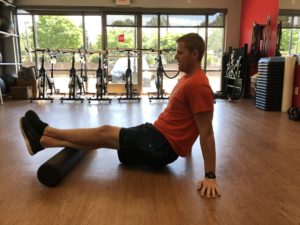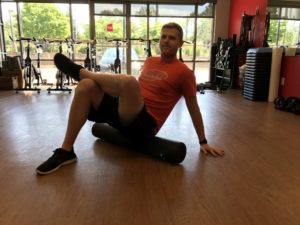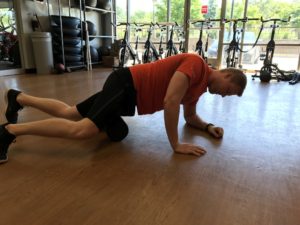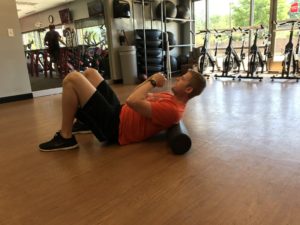By Ryan Williams, B.A. Exercise Science, NSCA Certified Personal Trainer
Self myofascial release (SMR), or self massage, can be a very effective tool when used properly to help benefit any health and fitness routine. Before we get to how to utilize foam rollers, lacrosse balls, rolling sticks, or any other SMR tools, we need to talk about what SMR accomplishes. Within the body there are connective tissues called Fascia that link and encase muscles. This tissue is very important in the movement, elasticity, and overall structure of muscles. Due to overuse, underuse and poor movement patterns, fascia can become dysfunctional. This can present itself in painful knots and overly tight muscles which can lead to further dysfunction through other compensatory manners. A simple way to combat this happening is by using SMR tools to loosen that fascia and allow muscle to work freely. The phrase ‘hurts so good’ is never more appropriate than when working on a trigger point. Grimacing is encouraged and knowing that the pain while rolling will have an immediate effect on the pain later will help get you through it. : )
How to roll
The foam roller is the most common and easiest tool to utilize for SMR. Spending 30-90 seconds on problem areas can help to release ‘stuck’ fascia. SMR is very effective prior to a workout to allow muscles to work properly while exercising. That being said, SMR is beneficial whenever done and can be added as a cool down activity or whenever you feel tight. While rolling if there is a spot that is extremely tender, sit and hold while there and breathe deeply until the pain dissipates. Foam rollers have a bigger surface area while a lacrosse ball can be a more pinpoint tool to really get into problem areas. Consult a fitness professional to help identify your trigger points, and develop a specific rolling plan that is right for you.
Common Trigger Points and How to Use the Foam Roller
Calves
Glutes and Piriformis
Quadriceps
Lats
Thoracic Spine





